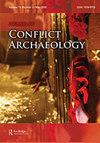Actor-Network Theory and the Practice of Aviation Archaeology
IF 0.6
0 ARCHAEOLOGY
引用次数: 7
Abstract
Abstract World War II aviation archaeology is a dynamic subfield of conflict archaeology, which has developed through the need to conserve twentieth-century military heritage resources. Like battlefield archaeology (: iii–vii), it has only recently emerged as a credible area of academic study. Theoretical development in both areas has been dominated by a military, historical-particularist viewpoint, which often ignores the role of society in warfare. Actor-network theory, which stresses the link between society and technology, provides an opportunity to broaden the theoretical perspective of aviation archaeology research. Recent archaeological work at a downed USAAF aircraft site near Gander, Newfoundland, is presented as a case study to illustrate the enlistment of a network of stakeholders, material culture, and textual and audio-visual evidence in the interpretation of a single site.行动者网络理论与航空考古实践
第二次世界大战航空考古学是冲突考古学的一个动态分支,它是通过保护20世纪军事遗产资源的需要而发展起来的。就像战场考古学(:iii-vii)一样,它最近才成为一个可信的学术研究领域。这两个领域的理论发展一直被一种军事的、历史特殊主义的观点所主导,这种观点往往忽视了社会在战争中的作用。行动者网络理论强调社会与技术之间的联系,为航空考古研究提供了拓宽理论视野的机会。最近在纽芬兰甘德附近的一个被击落的美国空军飞机遗址进行的考古工作,作为一个案例研究,展示了利益相关者网络、物质文化、文本和视听证据在单个遗址解释中的作用。
本文章由计算机程序翻译,如有差异,请以英文原文为准。
求助全文
约1分钟内获得全文
求助全文
来源期刊

Journal of Conflict Archaeology
ARCHAEOLOGY-
CiteScore
0.80
自引率
50.00%
发文量
8
期刊介绍:
The Journal of Conflict Archaeology is an English-language journal devoted to the battlefield and military archaeology and other spheres of conflict archaeology, covering all periods with a worldwide scope. Additional spheres of interest will include the archaeology of industrial and popular protest; contested landscapes and monuments; nationalism and colonialism; class conflict; the origins of conflict; forensic applications in war-zones; and human rights cases. Themed issues will carry papers on current research; subject and period overviews; fieldwork and excavation reports-interim and final reports; artifact studies; scientific applications; technique evaluations; conference summaries; and book reviews.
 求助内容:
求助内容: 应助结果提醒方式:
应助结果提醒方式:


